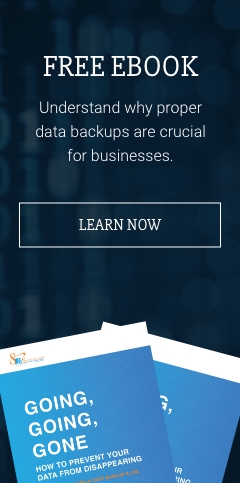Today’s computers have become so powerful that the average user doesn’t get to use 100% of their power. In fact, thanks to virtualization technology, one machine can support multiple users. This saves space and is much more energy efficient than having multiple standalone devices.
Many businesses across the United States leverage virtualization by storing their computers' operating systems, applications, and data on a remote server rather than on standalone computers, which enables them to create a virtual desktop infrastructure (VDI).
But how does VDI work and should your business adopt it? Let’s take a closer look.
How does VDI work?
In a VDI environment, a program called a hypervisor segments servers into virtual machines that in turn host virtual desktops. Users can access these virtual desktops using any internet-connected device, and all processing is done on the host server. A software-based gateway acts as the intermediary between the user and the server.
What this means is that with VDI, instead of allocating a traditional desktop to each employee, you can provide them with a thin client, which is a computer that uses resources stored on a central server instead of a localized hard drive. Thin clients are cheaper, consume less space, use less power, and run quietly because they operate without a fan.
What are the challenges of adopting VDI?
Adopting VDIs offers plenty of benefits, such as increased computing power, reduced latency, enhanced security, and streamlined network management. However, to be able to reap these benefits, you must be aware of the challenges of implementing VDI. Let’s take a look at some of them:
1. Change management
Implementing VDI for your business will significantly change how your employees work, so some of them may become hesitant to embrace it. To ensure better adoption, provide your staff with adequate notice and training. Share all the details of your upcoming VDI implementation on your company intranet or social network. Write an FAQ page where you can elaborate on the benefits of VDI. Finally, hold question-and-answer meetings and set up VDI training sessions.
2. Poor user experience
There’s nothing that ruins a VDI implementation faster than failing to deliver a great user experience. For instance, if your VDI solution is often excruciatingly slow, employee productivity would likely take a hit.
What’s more, if your IT team finds it difficult to manage your VDI solutions, they may commit mistakes in deploying software upgrades and reviewing security patches, which may negatively impact user experience.
To ensure user satisfaction, ask your employees the functionalities they need so that your VDI project will be able to meet those. For instance, if your employees often move from one location to another, you need to consider fast login times. After rolling out VDI, make sure to get feedback from your employees as well so you can make the necessary changes to improve user experience.
3. Solution complexity
There are many things you have to consider before implementing VDI. For one, you need to understand your company’s needs. If your VDI system doesn't have enough computing power, you will experience performance issues. On the other hand, if its power is way beyond what you need, you will incur unnecessary upfront costs.
To reduce VDI adoption complexities, partner with a reliable managed IT services provider like Safebit Solutions. We can design a VDI solution that fits your needs and budget. What’s more, we can reduce potential performance issues and provide technical support whenever you need it.
4. Security issues
VDI is a double-edged sword when it comes to security. While your data is more secure when stored in a data center instead of local devices, your entire network may be less secure when your employees are accessing it remotely from unsecured connections, like a public Wi-Fi network.
To mitigate security risks, ensure that your IT team performs regular malware scans and patch maintenance, and implements anti-spam and data loss prevention systems. Teach your employees cybersecurity best practices such as using strong passwords, refraining from connecting to unsecured networks, and not opening unknown emails and links.
Implementing VDI for your business can save you time, money, and physical space, but only after addressing the challenges that come with it. If you need more help understanding the benefits and challenges of implementing VDI for your Houston business, talk to Safebit Solutions! We can also help ensure a smooth transition to VDI. Give us a call today.


